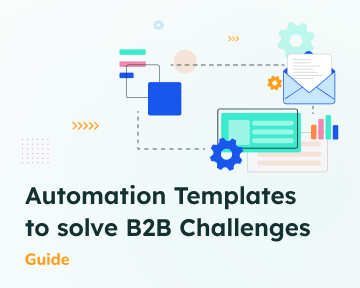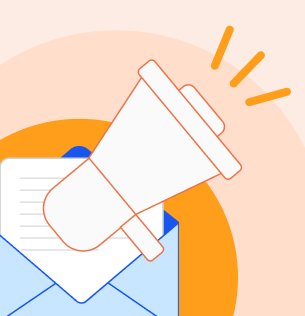Imagine a world where every digital interaction feels tailor-made for you — where businesses anticipate your needs before you even express them. This level of customisation isn’t a futuristic dream; it’s happening now, powered by AI for personalisation. For small and medium-sized businesses (SMEs) in Malaysia and Singapore, AI offers a game-changing opportunity to enhance customer experiences, boost engagement, and drive higher conversion rates. But how can SMEs effectively harness AI for personalisation? Let’s explore.
Why AI for Personalisation Matters for SMEs
For SMEs with limited resources, AI for personalisation offers a competitive edge by:
- Enhancing Customer Experience: AI can analyse customer behaviour and predict needs, allowing businesses to deliver relevant offers and content at the right time.
- Boosting Engagement: Personalised emails, product recommendations, and targeted ads increase customer interaction and brand loyalty.
- Optimising Marketing Spend: AI helps SMEs allocate resources efficiently by identifying high-potential leads and delivering content that resonates.
- Improving Conversion Rates: Customers are more likely to purchase when they receive offers and recommendations tailored to their interests.
Key Ways SMEs Can Use AI for Personalisation
1. AI- Powered Advertising on Social Media Platforms Pitfall of Over-Investing in Conversion Campaigns
Social media giants like Meta (Facebook & Instagram), YouTube, and LinkedIn use AI-driven algorithms to optimise ad delivery, ensuring businesses reach the right audience at the right time. These platforms analyse vast amounts of user data, including browsing history, engagement patterns, and interactions, to display ads that are most relevant to each user.
- Predictive Targeting: AI helps identify users most likely to engage with a business based on their past behaviour and interests.
- Real-Time Ad Optimisation: AI continuously refines ad delivery by analysing performance metrics and adjusting targeting settings in real-time.
- Personalised Ad Experiences: Platforms dynamically adjust the type, format, and content of ads based on user preferences, making advertising feel less intrusive and more relevant.
2. AI-Powered Dynamic Ads
AI enables businesses to create dynamic ads that automatically adjust their content based on the viewer’s behaviour, interests, and past interactions with the brand. Examples include:
- Meta’s Dynamic Ads: Show personalised product recommendations based on what users have previously viewed or added to their carts.
- Google’s Responsive Search Ads: Automatically test different headlines and descriptions to find the most effective combinations for each user.
- YouTube’s AI-Driven Ad Placements: AI determines which videos are most likely to generate engagement for specific ads, ensuring better targeting.
3. Dynamic Website and Email Personalisation
AI tools can customise website experiences based on visitor behaviour, showing personalised product recommendations, dynamic pricing, or content suggestions. Email marketing campaigns can also be optimised with AI-driven subject lines and content.
- Behaviour-Based Content Recommendations: AI personalises website content in real-time, displaying offers or articles based on user interests.
- Automated Email Personalisation: AI segments email lists, adjusting content and timing based on user interaction history to boost open and click-through rates.
- Dynamic Landing Pages: AI can tailor landing pages based on the visitor’s demographics, browsing habits, or past interactions with the brand.
Read an example of using ChatGPT in email drip campaigns.
4. AI-Enhanced Chatbots
While chatbots have been around for years, AI-powered chatbots have evolved to deliver more natural and human-like interactions. AI enhances chatbot capabilities by:
- Understanding Context: Advanced NLP (Natural Language Processing) allows chatbots to provide more tailored responses based on previous interactions.
- Predictive Assistance: AI-powered bots can anticipate user needs and proactively suggest solutions or products.
- Multi-Channel Integration: AI chatbots work across platforms (social media, email, and websites) to provide seamless customer support.
How to Get Started with AI Personalisation
For SMEs new to AI for personalisation, here’s a simple roadmap:
- Identify Goals: Define what you want to achieve — higher conversions, better engagement, or improved customer retention.
- Choose the Right Tools: Explore AI-powered platforms such as CRM systems, email marketing software, and ad automation solutions.
- Leverage Customer Data: Gather and analyse customer interactions to gain insights for better targeting.
- Start Small and Scale: Implement AI in a few areas first, such as social media advertising or email marketing, before expanding to other channels.
- Monitor and Optimise: Continuously analyse results and tweak strategies for better performance.
Conclusion
AI for personalisation is no longer just for large corporations — it’s now accessible to SMEs looking to enhance customer engagement and drive sales. By leveraging AI-powered tools for predictive analytics, personalised advertising, and dynamic content, SMEs in Malaysia and Singapore can build stronger customer relationships and achieve sustainable growth.
What’s Next for You?
At Lead Gen and CRM, we help SMEs unlock the power of AI-driven marketing with automation tool designed to enhance personalisation and customer engagement. If you’re ready to integrate AI into your marketing strategy, contact us today to explore the best solutions for your business!





